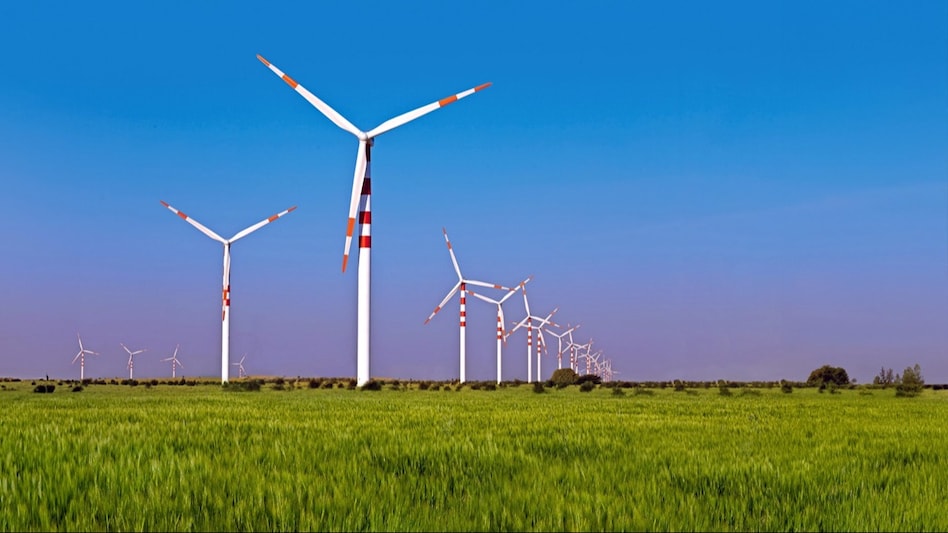 Budget 2024 is eagerly anticipated to reveal more information and allocate resources to accelerate the shift towards cleaner and more sustainable energy.
Budget 2024 is eagerly anticipated to reveal more information and allocate resources to accelerate the shift towards cleaner and more sustainable energy.
 Budget 2024 is eagerly anticipated to reveal more information and allocate resources to accelerate the shift towards cleaner and more sustainable energy.
Budget 2024 is eagerly anticipated to reveal more information and allocate resources to accelerate the shift towards cleaner and more sustainable energy.The Indian energy sector, especially the green energy segment, is going through a major churn. PM Narendra Modi has already set a target to install 500 GW of renewable energy capacity by 2030. The government is already planning to accelerate EV sales in India to capture the markets of 30 per cent of private cars, 70 per cent of commercial vehicles and 80 per cent of two- and three-wheelers by 2030. Also, it is targeting production of 5 million tonnes of green hydrogen by splitting water using electricity from renewable sources.
There is an immediate requirement to enhance the capacity addition of renewable energy from the current level of 15 GW per year to 50 GW per year, accompanied by a threefold increase in investments. Budget 2024 is keenly watched to get more information on the allocation of resources to accelerate the shift towards cleaner and more sustainable energy.
As per experts, India could experience a significant increase of 25 GW in renewable energy capacity by 2024, necessitating an investment of Rs 137,500 crore (approximately $16.5 billion). This underscores the tremendous potential of the renewable energy sector.
Ahead of FY2025, the energy sector is expecting some measures to boost the renewable and clean energy sectors. Here are some of the Budget expectations:
"India has prized its energy security while formulating its decarbonisation strategy and this would mean it would rely on low-carbon, domestically produced fuels and electrifying of end-uses. That really comes through with the spending on renewable energy, battery storage, biofuels, green hydrogen and all in all, shifting away from fossil fuels which would largely entail moving to EVs. The budget could have some relief in the 40% import duty on solar modules as 2023 renewable power additions were less than expected, as the 500 GW 2030 renewables target draws closer," said Mohd. Sahil Ali, senior sustainability analyst at S&P Global Commodity Insights.
"The interim budget for the fiscal year 2024-25 offers a unique opportunity to showcase India's dedication to green growth and a seamless transition to clean energy. Recognising the significance of private sector engagement, we must pivot our focus towards collaboration with venture capitalists and encouraging private sector participation through innovative financing mechanisms such as blended finance. Additionally, clear policy directions and structural reforms within the energy sector are needed to create a conducive environment. The budget must introduce strategies to de-risk the sector and instil confidence among investors. Let this budget be a transformative step towards a cleaner future fueled by the dynamism of stakeholders' diverse roles and expertise," said Saurabh Kumar, Vice President-India, Global Energy Alliance for People and Planet (GEAPP).
“Introducing Green Hydrogen Purchase Obligations (GHPOs) would create a guaranteed market for green hydrogen developers, catalyzing investments and reducing project risks. This forward-thinking policy is crucial to unlocking the vast potential of green hydrogen in sectors like transportation and green ammonia production," said Bikesh Ogra, MD & CEO of Jakson Green Private Limited.
"The Green Credit Programme, designed to incentivise voluntary environmental actions, is likely to receive additional support. This could involve setting clearer thresholds and benchmarks for various activities, ensuring a more consistent and transparent assessment of environmental impact. According to a report by IEEFA, India's green finance market is anticipated to hit $500 billion by 2025, driven by prevailing trends and market dynamics, which is why this growing segment needs to be addressed and recognized in the upcoming budget," Nidhi Mehra, Co-founder, Myplan8, told CNBC TV18.
“We anticipate the government’s clear direction, allowing green FDI in Indian decarbonisation efforts through international carbon market instruments, such as Article 6.2 and the voluntary carbon market. Additionally, we recommend reducing customs duties on solar imports, enhancing concessional finance availability and adopting a strategic approach to address the challenges faced by the sector," said Manish Dabkara, chairman and MD EKI Energy Services Ltd.
"Additional push for rooftop solar power (under the Suryodaya Yojana) is also expected. The stated intent of the scheme is to reduce the electricity bill of the poor, and to make India self-reliant in the field of energy. As per reports, the government’s expectation was to achieve installation of 40 GW in rooftop solar, although up until recently, the installed capacity has been only about 12 GW, out of which over 75% are non-residential. Adoption of the technology will not only result in lower electricity bills, but result in sustainability and reduce the carbon footprint," said Raj Ramachandran, Partner, JSA Solicitors and Advocates.
“Lowering the GST rate for hydrogen to, for instance, 5%, makes it more affordable for various sectors, including transportation and industry. Similarly, reducing the GST rate for electrolyser manufacturing from 18% to a competitive rate, e.g., 5%, encourages domestic production and fuels growth in the hydrogen sector," said Derek M Shah, Sr. Vice President & Head, L&T Energy.
"For expediting investments in this nascent sector, where most of the large Indian public and private sector energy players have shown interest, a dedicated nodal agency akin to SECI or a subsidiary under SECI can be set up, with initial capital from the Centre, said Devansh Jain, Chair of the Renewable Energy Committee, PHDCCI and Director of Inox Wind Energy.
Also read: Interim Budget 2024: Here’s how it can help ‘ease of doing business’ in India
Also read: Interim Budget 2024: Can expansion of PLI scheme boost the economy further? Here's what experts said
Also read: Interim Budget 2024: IRFC, Suzlon Energy, IRCON, RVNL shares turn multibaggers since last Budget